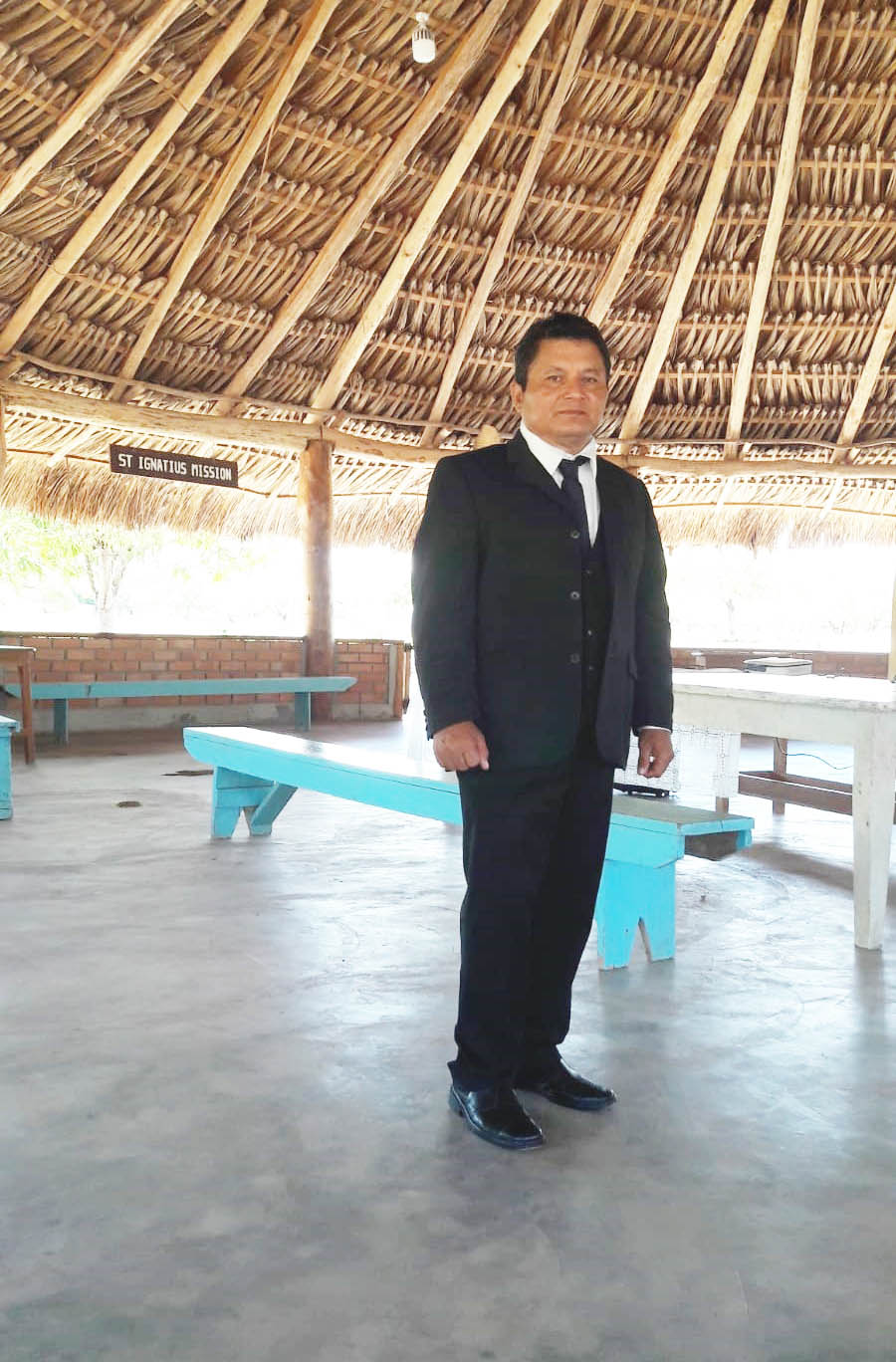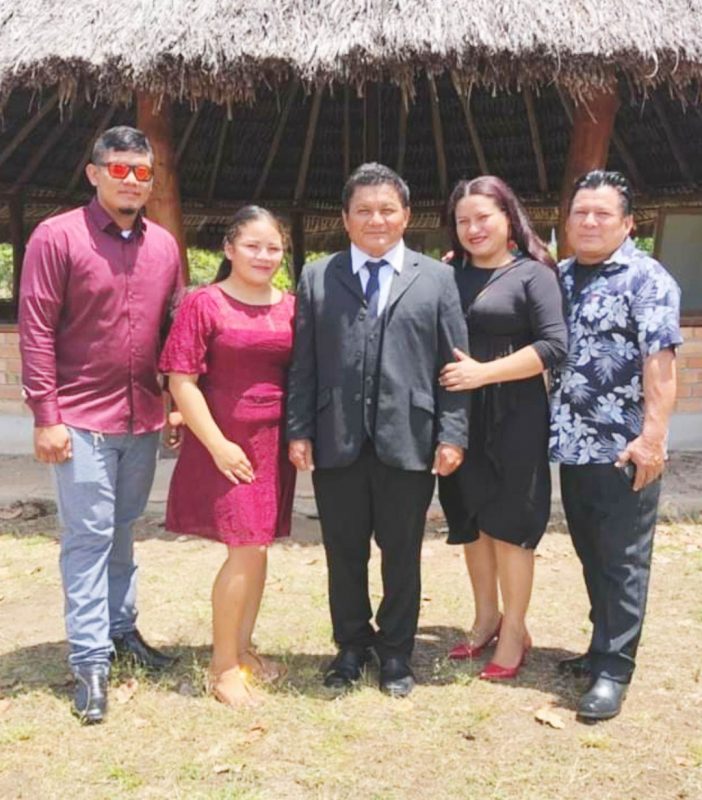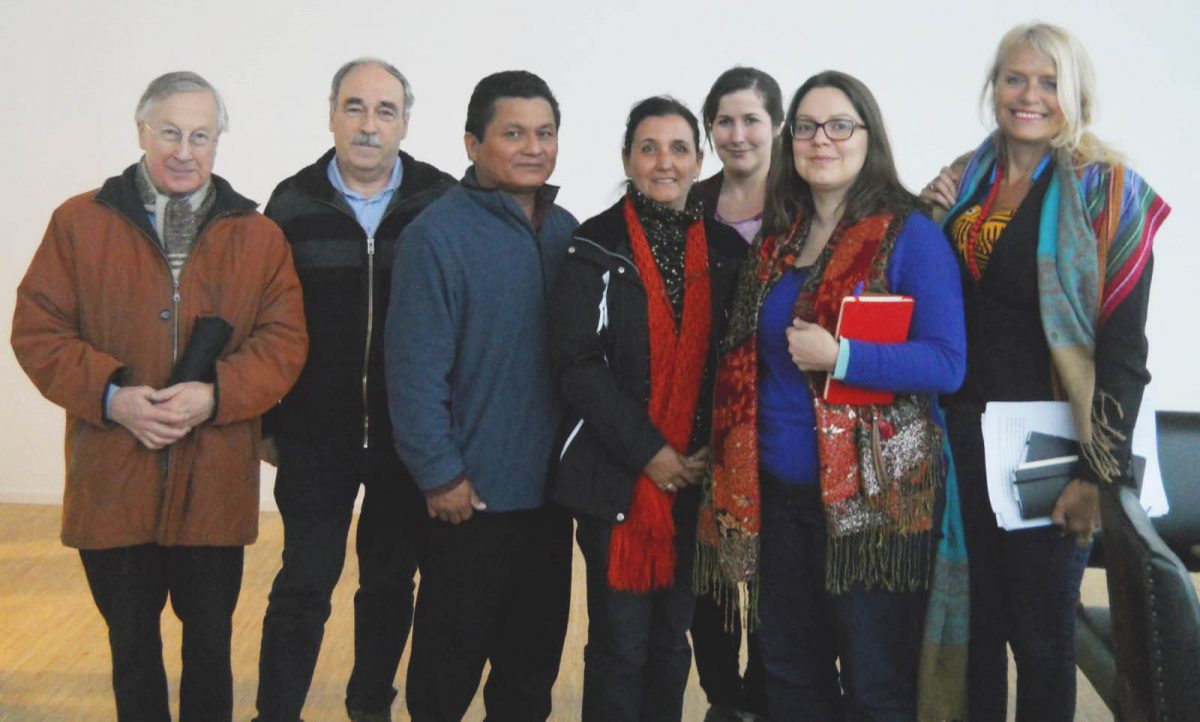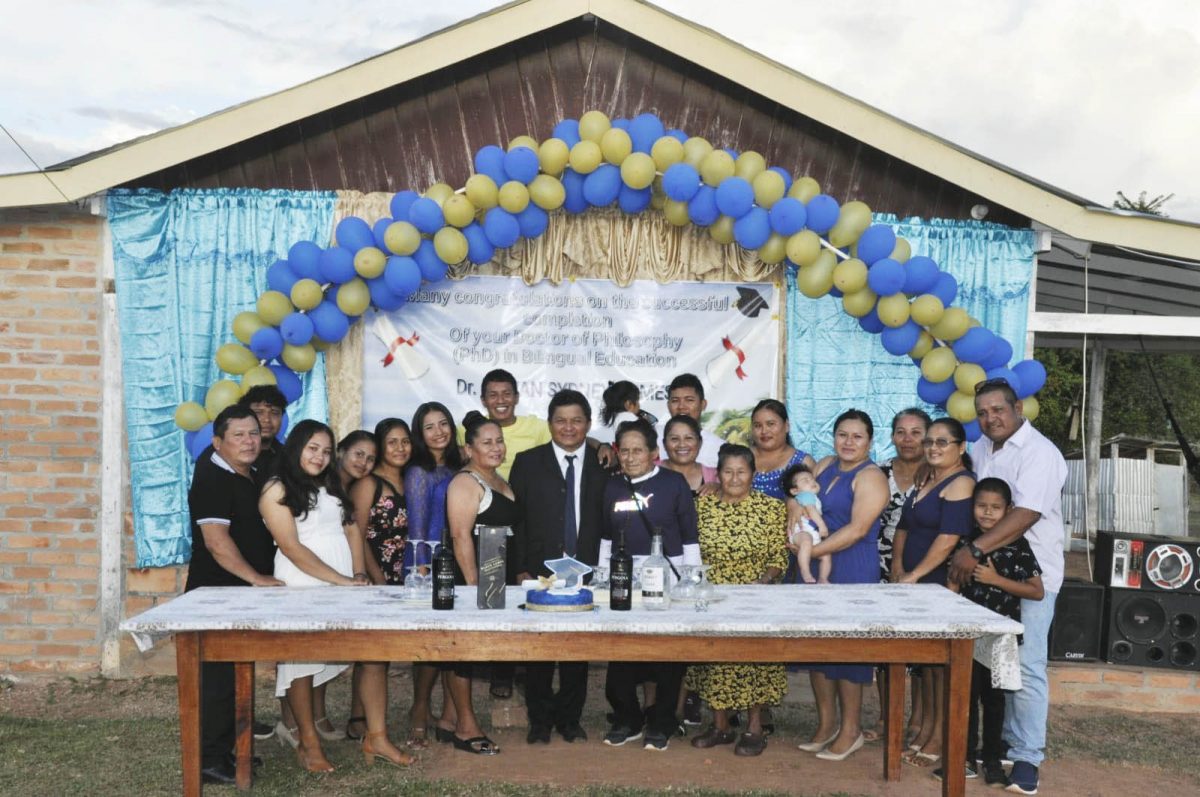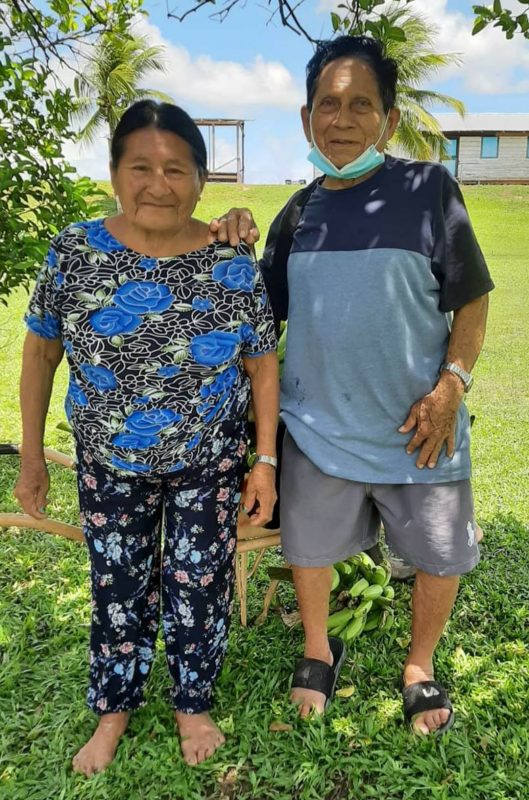Earlier this year, after some ups and downs, Adrian Sydney Gomes, 58, of Maruranau Village, South Rupununi achieved his goal of completing a Doctorate of Philosophy (PhD) in bilingual education.
Gomes was inspired to pursue the doctorate by Wapishana leaders and his recognition of the need for additional training to promote community-based literacy in a bilingual setting where the Wapishana language and culture may thrive and where teaching is done in English.
Having seen the potential for the Wapishana culture to grow in Wapishana villages, Gomes, now an applied linguist, resigned in September 2010 as principal of Aishalton Secondary School where he taught for 11 years, to revive and expand the use of the Wapishana language.
With experiences gained and through networking, he began his journey to the Centre for Linguistics (CFL) and the Centre for Indigenous America Studies (CIAS) at Leiden University, The Netherlands in 2016 to pursue the doctorate. The CIAS of Leiden University funded his studies.
While at Leiden University, he was embedded in both the CFL and CIAS, where his focus was on analysing the challenges of introducing an Indigenous bilingual education system, the Wapishana case in point.
Gomes submitted his dissertation in November, 2020, at Leiden University before his return to Guyana. However, because of lack of internet connectivity in Maruranau, he could not submit the revisions required until early 2021. He had to leave Maruranau to get to Shea or Lethem for internet connectivity. By July, 2021, the thesis was approved, with a defence date set initially for December 2021, then January 2022, then February 23, 2022, when it was finally done.
Now, back home and besides helping with farming activities, he plans to freelance and possibly do some consultancies. A distant alternative might be to teach on contract at the University of Guyana (UG), he said.
Meanwhile, he maintains contact with linguist Dr Konrad Rybka from Leiden University. At the villagers’ request, Gomes and Rybka organised a Wapishana translation workshop in December 2021 in Maruranau.
“Together with Dr Rykba, I also helped coordinate a language documentation project with the Taruma speakers who live in my village. We witnessed how they started speaking more in their language throughout the project. I also helped Dr Rybka find Atorad speakers and assisted him to put this initiative in motion. I have no doubt that a future project on this language is a good idea that will benefit the Atorad people. But it will also benefit our communities as a whole by promoting our linguistic diversity and sharing with our younger community members the skills and tools necessary to protect it.”
Together they plan a follow-up Wapishana translation workshop and to continue language documentation of the Taruma language and possibly the Atorad language too. They also plan to
restart Wapishana literacy classes for those young adults who did not attend previous classes.
“We also want to offer Wapishana literacy classes to children of school age. For these reasons, we intend to write proposals.”
Gomes intends to put more into the activities of the Wapichan Wadauniinao Ati’o (WWA), meaning ‘Wapishana for Our Descendants’, which promoted the reading and writing of the Wapishana language in Wapishana villages, and also the Wapishana Literacy Association (WTA). Gomes helped to form the WWA in 1997 in Maruranau. At present, there is no ongoing project run by the WWA in the local communities, but people who benefitted from past Wapishana literacy classes are applying their language skills in their church activities, story writing, translation and even texting and receiving messages on their mobile phones, Gomes said.
Describing himself as a language activist for his native language, Gomes said, “In the case of the Wapishana and other Indigenous Peoples, once knowledgeable in their cultural heritage, they will be in a better position to talk to their own people about it and at the same time, educate others about their own social and cultural values. If the Toshaos and other leaders must exhort a need for Wapishana cultural and historical continuity, there is need to create and organize avenues of cultural expressions for a common bond or heritage among Wapishanas. Knowing how their ancestors lived, and a fuller and deeper understanding of it would greatly contribute to a more grounded and sound sense of Wapishana identity and self-esteem.”
Early education
Gomes’ first five years of primary education was at Shea Primary, where his father taught at the time and the remainder at Maruranau Primary when his father was transferred to Maruranau. He learnt English from both parents, but learnt more Wapishana from his mother and her side of the family. In the village, he and his school friends conversed in Wapishana,
“When we were sent on errands, like inviting people for ‘manores’ or to visit our grandparents and neighbours in the village, we had to converse in Wapishana with the elders.” Manores are cooperative work done to complete a task.
The eldest of seven children, he has one brother and five sisters. His brother and three of his sisters are also teachers.
Gomes took his early schooling seriously. During his spare time, he “played a lot.” With siblings, cousins and friends, they played in the creeks, learning to swim and dive. “I learnt to use the arrow and bow. I loved outdoor games learnt at school – cricket, football, volley ball, table tennis and circle tennis.”
On weekends, he went with his parents to their cassava farm. Sometimes, they went fishing in the savannah and the jungle near the edge of the savannah.
“I never went deeper into the forest as far as Quitaro or the Rewa rivers where other children my age went on fishing and hunting trips with their families. As such, I did not master the knowledge and skills of fishing and hunting or travelling and camping out in the deep jungle.”
His parents were loving but strict and were his biggest motivators, he said. “We had no electricity but my father encouraged us to study in the nights or early in the mornings. We used carbide lamps and later, gas lamps. My mother would transport me in her bullock cart to Lethem to catch the flight to Georgetown, where I completed my secondary education.”
Gomes did not write the common entrance examinations as it was not offered at Maruranau at the time. He went straight to forms one and two in Maruranau primary top where he wrote the Preliminary Certificate Examination and the College Preceptors Examination. He passed both exams by age 13 and that would have been the end of his education.
However, his head teacher, Phillip Naraine, and teacher Stephen Gonsalves saw his academic potential and recommended that his father Leo Gomes take him to Georgetown for further schooling.
Gomes and his father travelled to Georgetown to meet with officials of the hinterland scholarship programme and so he obtained a scholarship. He was placed in Form 3 at Central High School. “I experienced culture shock. I felt [like] a total stranger. I placed among the top five in my class at the end of the first term. I maintained that throughout. Soon, my classmates became friendlier towards me.”
In Form 4, he became a prefect. In Form 5, he earned good grades at both the General Certificate of Education Ordinary Level and at the Caribbean Secondary Education Certificate (CSEC) examinations. On his return to Maruranau the district education officer asked him to apply to teach.
He taught for over a year at Maruranau Primary, then went to Cyril Potter College of Education (CPCE) between 1983 and 1985 and then returned to Maruranau Primary, where he spent ten years. He taught Grade 6 pupils. “For the first time in the history of our school, we produced some outstanding pupils who were placed at St Ignatius Secondary School and other top secondary schools in Georgetown.”
